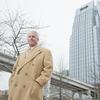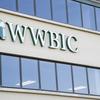As a redevelopment boom has swept across downtown Denver over the last 25 years, one nook of the city’s core has been left largely untouched. Until recently, anyway.
The area in question, where the northeastern reaches of the central business district connect with Five Points and the Union Station neighborhood, is known among the development and urban planning set as “Arapahoe Square.” And one of its most anticipated redevelopment opportunities just hit the market.
Intercity bus service provider Greyhound Lines announced Wednesday it is looking to sell its terminal property at 1055 19th St.
The parcel is likely to fetch a sizeable sum. The nearly 2.5-acre site carries a downtown core district zoning. That means the future owner will have the right to build as high as 400 feet there, a detail highlighted in a news release from JLL, the real estate services firm marketing the property on behalf of Greyhound.
“Acquiring a full city block in this excellent location with such liberal zoning is a rare opportunity. JLL is excited to partner with Greyhound to select a developer to positively transform the neighborhood,” JLL executive vice president Patrick Bolick said in a news release.
RELATED: The Sweet Six: Downtown Denver’s standout projects completed in 2018
Turning Arapahoe Square into downtown’s “new neighborhood” was a goal set forth in the 2007 downtown area plan put together by the Downtown Denver Partnership and city planners. The partnership, on its website, notes that the area, like many sectors of downtown, was mostly cleared of structures in the 70s and 80s to provide parking for businesses in the commercial core.
A dozen years later, that goal is in reach.
A pair of large apartment buildings are nearing their opening dates along Welton Street. Another big block is coming along at the corner of Broadway and East 20th Avenue. Combined, the three buildings will bring more than 1,000 new rental units to the Arapahoe Square area.
At the northwest corner of 21st and Arapahoe Streets, work is underway on the Buell Public Media Center. The $34 million facility, slated for completion in 2020, will be the future home of Rocky Mountain PBS, jazz station KUVO and a handful of other media uses.
“The growth in downtown is now really coming to Arapahoe Square,” Randy Thelen, vice president of economic development for the Downtown Denver Partnership, said this week. “The Greyhound site is sort of right in the center of that, so it can serve as the linchpin to connect those neighborhoods.”
Thelen has a lot to keep up with these days. There are major, block-spanning developments rising on the former site of the Market Street Station RTD terminal on the 16th Street Mall and across from Coors Field. The Greyhound station presents another opportunity for a big-time project.
Beyond being part of Arapahoe Square, Thelen noted the bus terminal was one of three locations on the eastern end of downtown pinned as “opportunity sites” in the 2007 area plan. Of the three, one is now being turned into the Block 162 office tower at 15th and California streets and another, home to the soon-to-close Shelby’s Bar and Grill, has been tabbed for a 38-story condo project.
Related Articles
- February 18, 2019
Eyes on the Denver skyline: These sky-scraping projects stand to leave their mark on the Mile High City
- June 24, 2018
For Denver apartment builders, luxury still king despite demand for workforce units
- November 29, 2018
Rocky Mountain Public Media breaks ground on $34 million headquarters in Denver’s Arapahoe Square
“I think, as downtown has developed, these were certainly spots that were sort of calling for a higher and better use,” he said. “It’s fun and exciting to see one under construction, one potentially about to be under construction and now one on the market.”
Greyhound isn’t rolling out of town. The company expects to find a new location in the Denver area by the end of 2020. Rey Nunez, Greyhound’s senior director of real estate, said in a news release that it’s the company’s goal to “improve the customer experience for its passengers by relocating its bus terminal to a well-located and modern intermodal transportation facility.”



